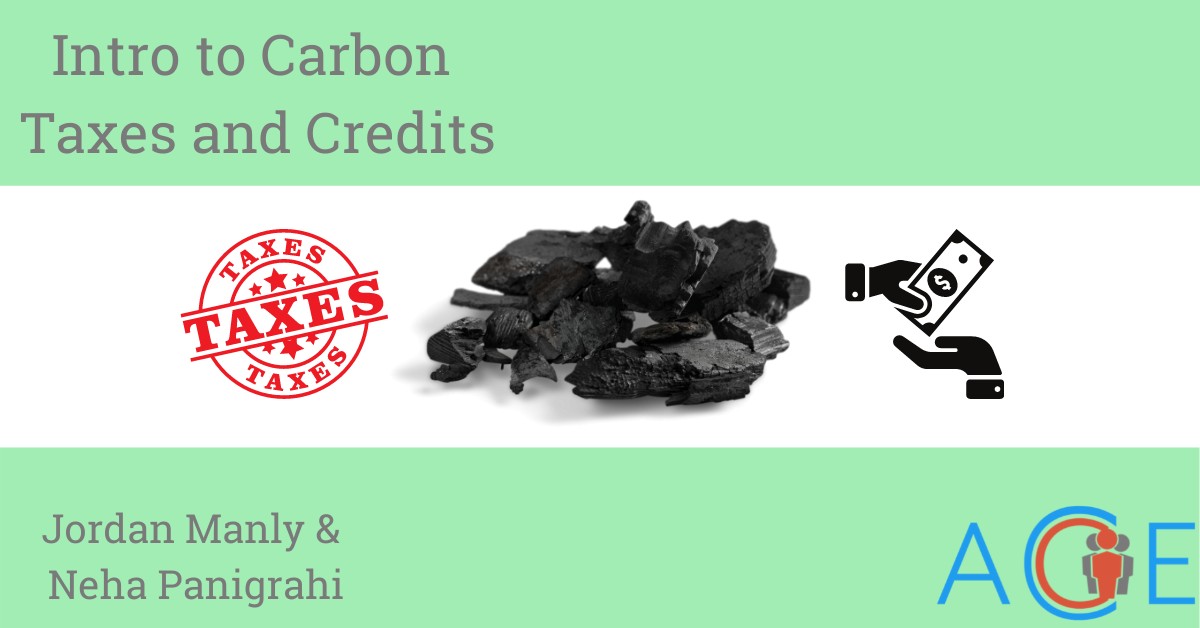Carbon Fee & Dividend
This brief is the second in a 4-part series on carbon tax and credit policy in the United States: carbon tax, carbon fee & dividend, cap & trade, and discussion.
A fee and dividend system (FDS) incorporates a traditional carbon tax, a “fee”, and a “dividend”, which is a check that is equally distributed to qualified citizens without any spending stipulations. A carbon tax is a fee on emissions that aims to reflect the additional costs created by fossil fuels while also providing a financial incentive to switch to more renewable sources of energy.
How it Works
An FDS would tax firms producing fossil fuel emissions which are harmful to the environment, but instead of the tax revenue going to the federal government (a traditional carbon tax) it would be distributed to citizens periodically. Essentially, citizens become shareholders for the environment, and when the environment is impacted through fossil fuel emissions, citizens are compensated. The amount of compensation is dependent on the level of carbon taxation (current proposals range from taxing carbon at $20-150/metric ton).
Currently, the US runs a dividend program through the Alaska Permanent Fund (APF) which returns surplus revenue from state-owned oil and gas reserves to eligible Alaskans. The Alaska Fund does not tax carbon and does not provide a strong incentive to reduce emissions, but is a working example of distributing equal lump-sum payments to citizens.
Carbon Fee & Dividend Legislation
FDS legislative bills have since been introduced in the 116th Congress, such as the Climate Action Rebate Act (introduced by Sen. Coons and Sen. Feinstein). This bill calls for an initial fee of $15/metric ton and would increase by $15 annually. The revenue would be partially distributed in taxable carbon dividends, partially put towards research and development, and partially invested in transitional assistance. A similar bill is the America’s Clean Future Fund Act (introduced by Sen. Durbin) which includes a similar carbon pricing system, but 75% of the tax revenue is returned as a dividend while the rest is invested in clean energy and transition efforts. More recent fee and dividend developments include The Energy Innovation and Carbon Dividend Act (introduced by Rep. Deutch in the 117th Congress). While many examples of such bills exist, each maintains differences in their implementation or distribution. See this carbon pricing bill tracker for more information.
Benefits and Downsides
An FDS can reduce harmful emissions and stimulate the economy by incentivising companies to reduce carbon outputs while sparking innovation and competition in the private sector. A recent study found that an FDS could reduce carbon dioxide emissions by 52% below 1990 levels after 20 years. The same study also found that recycling the revenue back into the economy through dividends could create nearly 2.8 million jobs. Additionally, one of the main drawbacks of a carbon tax is that it can disproportionately impact low-income households who spend a large share of their income on emission intensive products. A Fee and Dividend System has the potential to make a regressive carbon tax progressive by rewarding poorer households, who typically have smaller carbon footprints, with higher payouts than their larger, wealthier counterparts. For this benefit to stand, progressive dividends would need to be written into the FDS legislation.
One key benefit of the carbon tax is the opportunity to raise funds to invest in green technology. If the revenue from the carbon tax is instead distributed to citizens, it will have less impact in stimulating a green economy and providing aid to areas suffering from the impacts of climate change.
Since the core of a fee and dividend is a carbon tax, there are similar drawbacks to this policy. Without certain mechanisms or safeguards in place, like border carbon adjustments, there is a high risk of outsourcing.

